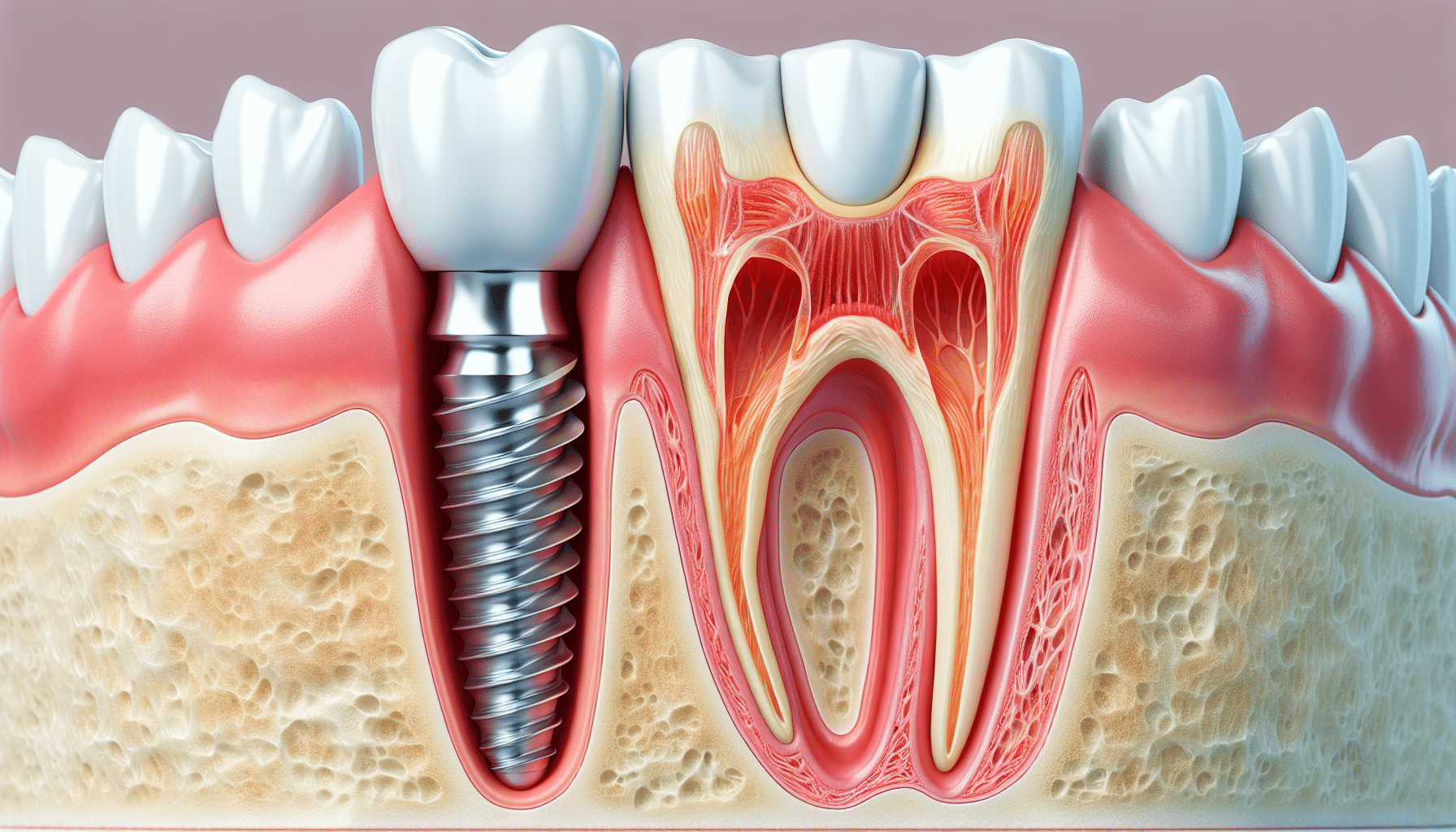Not known Details About Dental Sense
Not known Details About Dental Sense
Blog Article
All about Dental Sense
Table of ContentsWhat Does Dental Sense Do?The 7-Minute Rule for Dental SenseAbout Dental SenseTop Guidelines Of Dental Sense
are clinical gadgets operatively implanted into the jaw to bring back an individual's capability to eat or their appearance. They supply support for synthetic (fake) teeth, such as crowns, bridges, or dentures. When a tooth is lost as a result of injury or condition, a person can experience problems such as rapid bone loss, defective speech, or adjustments to chewing patterns that lead to discomfort.Oral dental implant systems are composed of a dental implant body and dental implant abutment and may likewise consist of a joint fixation screw. Front tooth filling. The dental implant body is surgically placed in the jawbone instead of the tooth's root. The oral implant abutment is generally affixed to the dental implant body by the abutment addiction screw and extends with periodontals right into the mouth to support the connected man-made teeth
(http://peterjackson.mee.nu/do_you_ever_have_a_dream#c2310)Structure of The Dental Implant System choosing oral implants, talk with your oral copyright about the possible benefits and risks, and whether you are a candidate for the treatment. Things to take into consideration: Your total wellness is an important aspect in establishing whether you are an excellent candidate for dental implants, how much time it will require to recover, and how long the implant might remain in location.
Smoking may influence the recovery procedure and decrease the lasting success of the implant. The healing process for the dental implant body might take several months or longer, throughout which time you normally have a short-lived abutment in place of the tooth. the oral implant procedure: Carefully follow the dental hygiene instructions provided to you by your oral supplier.
The Single Strategy To Use For Dental Sense
Implant failing can lead to the need for an additional procedure to fix or change the implant system. Recovers the ability to chew Brings back aesthetic look Assists maintain the jawbone from shrinking as a result of bone loss Maintains the wellness of the surrounding bone and gum tissues Helps maintain nearby (nearby) teeth secure Boosts high quality of life Damages to bordering all-natural teeth during implant positioning Injury to the surrounding tissues throughout surgical procedure, such as sinus perforation Injury throughout surgical procedure (for instance, crack of surrounding jawbone) Poor function, such as really feeling like the teeth do not bite with each other normally An experience that the tooth is loose or twisting in position resulting from a joint screw loosening Implant body failing (looseness of the dental implant body) because of systemic infection, which may be a lot more likely in individuals with unrestrained diabetes mellitus because of neighborhood infection in bone and gums supporting the dental implant body due to postponed healing, which might be extra likely in individuals that smoke Problem cleaning the gum tissues around the implant, resulting in inadequate dental health Without treatment periodontal illness Post-surgical pins and needles as a result of nerve impingement or damage Always notify healthcare suppliers and imaging professionals that you have dental implants prior to any kind of magnetic vibration imaging (MRI) or x-ray procedures.
FDA is not familiar with any type of negative events reported for MRI or x-ray treatments with dental implants. Dental implants systems are generally constructed from products that follow worldwide consensus requirements of the International Organization for Standardization (ISO) or ASTM International. These criteria have information of what makes a risk-free product.

An oral implant is a structure that changes a missing tooth. With screw-like gadgets, the specialist inserts a dental implant into the jawbone, and it acts as a support for an artificial tooth, called a crown. A gadget called a joint links the man-made tooth to the oral implant. The crown is customized to fit the person's mouth and match the shade of their teeth.
Dental Sense Fundamentals Explained
Some individuals are not qualified for dental implant surgery. It is for dental specialists to operate people with: acute illnessuncontrollable metabolic diseasebone or soft tissue illness or infectionIf these issues are resolved, a person can have the surgery. In, oral surgeons avoid operating people with: If people with any of the above go through dental implant surgery, there is a greater threat of the implant failing.

Oral implant surgery is a tailored process. It's not the same for everyone. The adhering to provides a general overview of what you can expect your dental professional, dental surgeon, periodontist or prosthodontist to do: Place the dental implant operatively. Provide you time to heal. Attach the post and final crown, bridge or denture.
Next, your cosmetic surgeon will thoroughly put the dental implant right into your jaw. Your cosmetic surgeon will rearrange your gums and shut the cut with stitches. If your dental implant is near the front of your mouth, your dental practitioner will check these guys out make a temporary tooth for you to wear till you heal. This way, you won't have a gap in your smile while you recuperate.
Getting The Dental Sense To Work
Throughout the healing stage, your jawbone must fuse to the oral implant. This process can take anywhere from 3 to nine months.
When your dental implant heals, your dentist can affix the joint (tiny port article) and your last repair (crown, bridge or denture). This generally takes concerning one hour to finish and may call for a 2nd minor surgical treatment. You should not feel any kind of pain throughout your oral implant procedure because your supplier will certainly use drug to numb your periodontals.
Report this page